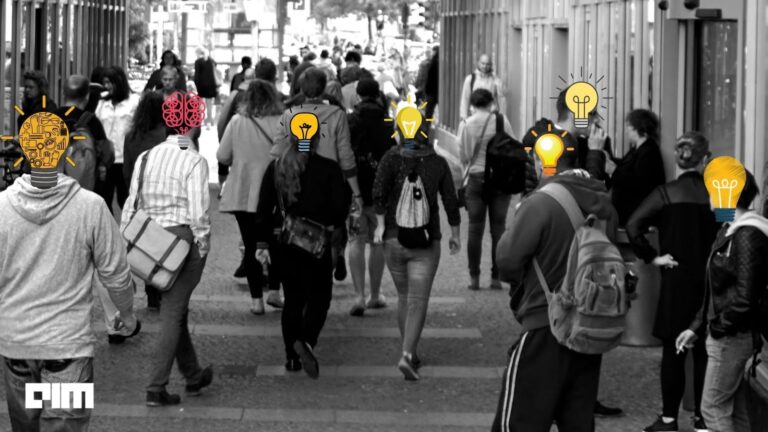Data labelling has become a buttress for preprocessing data before the model development stage. However, at times, models can also produce unfair predictions even with fairly labelled data. And the existent unfairness from fairly labelled trained datasets is then amplified by machine learning systems. Carolyn Ashurst from the Alan Turing Institute, Ryan Carey from the University of Oxford and Silvia Chiappa and Tom Everitt from DeepMind, have published a paper that establishes a new method that can gauge this unfairness and help reduce it.
Defining introduced total variation
The research presents a new metric to measure the introduced unfairness called introduced total variation. Before calculating the introduced unfairness, the study wants a barometer to assess the disparity between the training labels of datasets and the predictions the model makes. These two values are then compared to each other. The study suggests that an appropriate metric for this purpose could be total variation.
The concept for total variation was introduced by Zhang and Bareinboim in 2018 as a generalisation of demographic disparity that defines how strong the statistical relationship is between a sensitive variable like gender and the outcome, which could be the final score given to a candidate’s resume.
Introduced total variation is separate from other measures of unfairness that already exist, like separation and sufficiency. Separation prevents introduced total variation in models, while sufficiency helps prevent reduced total variation. Consequently, this may make it seem like introduced unfairness is entirely avoidable. But that is far from the truth.
Objective
The research aimed to create graphical conditions under which introduced total variation can occur. Structural causal models and their related graphs were used to show the relationship between the variables that form the basis of the datasets. The study found that the unfair predictions, in spite of fair labelling, were happening because a feature that the outcome relied on was statistically dependent on the sensitive attribute. The study proposes that adding the sensitive variable as a feature instead removes the incentive for introduced variation under well-behaved loss functions.
It then includes the predictor and the loss function of the machine learning model in the same graph to build on influence diagrams. These results can be recycled for predictors that are
at an optimal level. It was found that the conditions under which total variation is incentivised are influenced by the loss functions. In this case, the study considered P-admissible loss functions specifically.
Methodology
Introduced fairness can be theoretically applied to both causal models and statistical ones. The researchers introduced path-specific effects as they are adept at figuring out complex unfairness in models. The study then builds upon this framework to determine the path that can be labelled as fair.
The study based its fairness analysis on algorithms from supervised learning to predict about individuals and uses structural causal models (SCMs) to demonstrate the relationships between the underlying variables. The paper defined the outcome variables included in the SCM as Y and U. The related graph is called an SL graph. An SL SCM is an SCM containing outcome variables Y and U, model prediction and the loss of an SL model. The SL SCM or graph contains a sensitive variable A which usually represents an attribute or category like gender, age or race.
Introduced fairness is then defined by first choosing an apt measure of unfairness for both Y and U variables and then secondly calculating the difference in unfairness between the two variables. The total variation then measures the difference in average outcomes between the two values of the sensitive variable.
Limitations
The results that graphical models produce are sensitive to assumptions aside from the fact that the graphical criteria results pertain to optimal policies. The model itself could be substandard if the model class is substandard or enough data isn’t used to train the model.
The graphical criterion also offers an incentive only if certain conditions are met for compatibility, not in all cases. However, according to the empirical results, an incentive is not given most of the time. On the other hand, if the graphical criteria are not met, then it is guaranteed that optimal policies without the property exist. But this is not a guarantee for all optimal policies.
There are certain limitations that the research underlined: 1. For group fairness analyses, the process of defining the group is a difficult one, especially with regards to ethics, 2. If unfairness isn’t defined well before developing a model, real-time cases of unfairness can be missed,
3. Group fairness analyses have a possibility of overlooking individuals, and 4. It is complicated to convert a causal effect into a fairness assessment.
Conclusion
The study proved that models could show unfairness if incentivised and developed path-specific effects that can help label paths as fair or unfair. The assumption that fair labelling of data only results in fair predictions is also incorrect and has been dismantled. Another research paper released by Carnegie Mellon University was based on how unlabelled data can be leveraged better to estimate the generalisation error. Perhaps, these studies could be signalling us to curb the heavy and blind dependence upon labelled data.



















































































